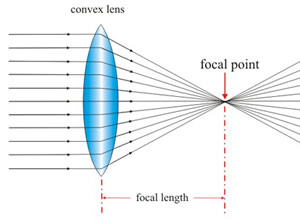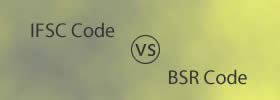Difference between Convex and Concave Lens
Key Difference: Concave and convex are two basic types of lenses. A convex lens focuses light rays, whereas a concave lens causes the light rays to diverge.
 A lens can be defined as a transparent material (like a glass) that has either an open curved surface or one flat surface or two curved surfaces. They work on the principles of refraction, as they change the direction of light waves by refraction. A convex lens focuses light rays, and therefore is also known as a converging lens. The focal point is the point where the light rays meet.
A lens can be defined as a transparent material (like a glass) that has either an open curved surface or one flat surface or two curved surfaces. They work on the principles of refraction, as they change the direction of light waves by refraction. A convex lens focuses light rays, and therefore is also known as a converging lens. The focal point is the point where the light rays meet.
These types of lenses are thicker in the middle than in comparison to their edges. Due to this structure, it is able to converge the light rays. They produce real images, and therefore are mainly used in various optical instruments. A convex lens enables a thing to look bigger than its actual size. It happens due the fact that rays focus on the object and the object looks bigger than its actual size. Light that passes through a convex lens can be focused on a surface like a screen.
 A concave lens is just the opposite of a convex lens. It is thinner in the middle and thicker at the edges. Therefore, it diverges the light rays. The emerging rays do not actually intersect. However, they seem to intersect on the incidence side by tracing the emerging rays backward.
A concave lens is just the opposite of a convex lens. It is thinner in the middle and thicker at the edges. Therefore, it diverges the light rays. The emerging rays do not actually intersect. However, they seem to intersect on the incidence side by tracing the emerging rays backward.
This phenomenon is responsible for the creation of virtual images. Therefore, the image created by a concave lens is always a virtual image rather than a real image. They are unable to form an image on a screen. However, they are widely used together with convex lens in order to provide sharp images to the convex lens.
Comparison between Convex and Concave Lenses:
|
|
Concave |
Convex |
|
Structure |
A concave lens is thinner in the middle and thicker at the edges. |
A convex lens is thicker in the middle and thinner at the edges. |
|
Other name |
Diverging Lens |
Converging Lens |
|
Images Formed |
Virtual, upright and smaller than the object between object and the lens. (regardless of the object's position) |
Real , inverted, smaller than object, - object at F Real , inverted, same size as object, - object at 2F Real , inverted, larger than object, object between 2F and F No image - object at F Virtual, upright, larger than object – behind object on the same side of the lens |
|
Meaning |
Concave means “hollowed or rounded”. |
Convex means “curved or rounded like the outside of a sphere or circle”. |
|
In Spectacles |
Used for the correction of problem in short sight. |
Used for the correction of problem in long sight. |
|
Applications |
Glasses (to correct for short sight), spy holes in doors, some telescopes, back window of coaches, etc. |
Eye, camera, overhead projector, focus sunlight, projector microscope, simple telescope, glasses (to correct for long sight), magnifying glass, etc. |
|
Focal Length |
Negative |
Positive |
Image Courtesy: gcsescience.com, passmyexams.co.uk









Comments
sehaj deep
Tue, 03/13/2018 - 20:48
James
Mon, 02/12/2018 - 07:28
Vishal Kumar
Tue, 11/21/2017 - 19:56
It's really good. It helps a lot.
astha
Thu, 06/29/2017 - 14:33
kanak
Fri, 05/26/2017 - 19:48
sweety
Fri, 04/14/2017 - 14:02
Goodmohan
Sat, 07/01/2017 - 07:03
Kiing
Sat, 06/03/2017 - 23:23
Bisma
Thu, 03/23/2017 - 19:46
Goodmohan
Sat, 07/01/2017 - 07:01
Pages
Add new comment